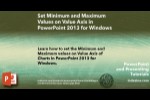Discover on Indezine.com how literature students are using PowerPoint as a storytelling medium. Learn creative techniques to enhance your presentations and storytelling skills.
Author: Barrera Alcova
Product/Version: PowerPoint

Image: Pexels
In the realm of academic presentations, PowerPoint has long been a staple tool for students across various disciplines. However, its use extends far beyond the mere presentation of facts and figures. For literature students, PowerPoint has emerged as a unique storytelling tool, allowing for the fusion of text, imagery, and sound to bring stories to life. This creative application transforms the traditional use of PowerPoint, opening new avenues for expression and narrative techniques.
Within the college environment, where students are constantly engaged in studying, completing assignments, and learning new concepts, PowerPoint offers a refreshing and dynamic method to present their understanding and interpretation of literary works. As students delve into the art of storytelling, they find that PowerPoint can be a powerful ally in this creative endeavor. And for times when their academic workload becomes overwhelming, many turn to professional Write My Essay For Me services, allowing them to focus on honing their presentation skills without compromising their other academic responsibilities.
Literature students are increasingly leveraging PowerPoint to merge textual analysis with appropriate visuals. This technique involves the integration of images that resonate with the themes, settings, or dynamics of characters in a literary piece. By doing so, students can create a more immersive experience, allowing the audience to visualize the narrative in a more compelling way. This visual aid can be particularly effective in illustrating complex scenes or highlighting key moments in a story.
Storyboarding is another creative approach where students utilize PowerPoint to map out a narrative’s progression. By arranging slides sequentially, they can effectively convey plot developments, character transformations, and the buildup of dramatic tension. This method serves as a visual aid in understanding the structure of a story and the interplay between various narrative elements. It also helps in presenting a comprehensive view of the storyline, making it easier for the audience to follow and engage with the narrative.

Image: Pexels
The inclusion of audio elements such as voice narrations, thematic music, or sound effects in PowerPoint presentations significantly enriches the storytelling experience. These audio components can set the tone, evoke emotions, and provide a richer context to the literary analysis. For example, background music can be used to complement the mood of a scene, while narrations can help in delivering a more personal and direct interpretation of the text.
PowerPoint’s interactive features, like hyperlinks and embedded questions, are excellent tools for engaging the audience. Hyperlinks can direct viewers to additional resources for further reading or illustrate a point more vividly, while embedded questions can stimulate thought and discussion, making the presentation more interactive and participatory. This interactivity transforms the presentation from a one-way communication into a more dynamic and engaging learning experience.
In their study of literature, students often create character maps using PowerPoint. These maps visually represent the relationships, development, and complexities of characters within a story. By visualizing these connections and evolutions, students can offer a clearer and more nuanced understanding of character interactions and their roles in the narrative. This approach helps in dissecting intricate character relationships and in highlighting character growth or decline throughout the story.
PowerPoint also enables the creation of visual essays. In these essays, students can analyze literary themes or character arcs using a blend of text and visual elements. They can incorporate quotes, images, and thematic visuals to support their analysis, making their arguments more engaging and visually appealing. These visual essays allow for a deeper exploration of themes, character motivations, and literary techniques in a format that is both informative and aesthetically pleasing.
Students often construct PowerPoint presentations focusing on specific themes or symbols in a literary work. These presentations use PowerPoint’s features to emphasize the importance and impact of these themes and symbols. For instance, students can use color schemes, fonts, and imagery that align with a theme, thereby enhancing the audience’s understanding and appreciation of the literary work’s deeper meanings.
Creating collages that depict various symbols from a text is another way students use PowerPoint for literary analysis. These collages allow for a visual exploration of complex literary devices and symbols, offering an engaging and interpretative view of the text. By assembling images, symbols, and text, students can convey the symbolic meanings and their relevance to the narrative or themes of the work.
Students are increasingly leveraging PowerPoint’s animation features to create dynamic and engaging storytelling experiences. Animations can bring life to characters, settings, and plot developments, making the presentation livelier and captivating. This approach not only enhances the visual appeal but also aids in illustrating motion and change within the story.
Embedding short video clips that relate to the story or offer a modern interpretation of classic texts is another innovative use of PowerPoint in literature studies. These videos can provide contemporary perspectives, historical context, or visual interpretations that complement the textual analysis. This integration of video content adds a multimedia dimension to presentations, making them more diverse and engaging.
Sharing PowerPoint presentations online allows students to reach a broader audience, including peers, educators, and even a global audience. This online sharing facilitates the exchange of ideas, feedback, and broader discussions, extending the classroom learning experience to a wider community.
Utilizing platforms like Zoom or Microsoft Teams for delivering presentations has become increasingly popular, especially in remote learning environments. This method allows students to present their work virtually, engaging with their audience in real-time, irrespective of geographical boundaries. Virtual presentations have become a vital part of modern education, offering flexibility and accessibility in learning and sharing literary analyses.
For literature students in college, PowerPoint has become more than just a tool for creating school assignments. It has evolved into a versatile platform for storytelling, blending traditional literary analysis with modern presentation techniques. By embracing these creative approaches, students enhance their learning experience and gain valuable skills in digital storytelling. As they continue to push the boundaries of how we interpret and present literature, support from resources like the best dissertation writing service can be instrumental in balancing their creative endeavors with academic demands. Literature students are not just studying texts. They are reimagining the way stories are told and shared in the digital age.



Microsoft and the Office logo are trademarks or registered trademarks of Microsoft Corporation in the United States and/or other countries.